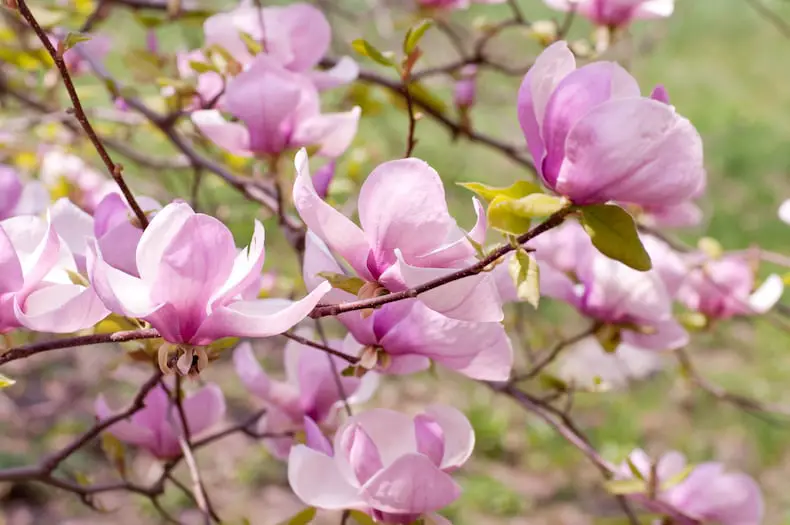Caring for magnolia trees can transform any garden into a haven of beauty, and “How to Care for a Magnolia Tree: Expert Tips for Stunning Blooms” offers the guidance needed for success. These majestic trees are celebrated for their large, fragrant flowers and glossy foliage, making them a favorite among gardeners seeking elegance and charm. Understanding the unique requirements of magnolias, from soil conditions to watering habits, is essential for promoting healthy growth and abundant blooms.
This comprehensive guide covers every aspect of magnolia care, providing actionable advice for both beginners and experienced gardeners. From pruning and fertilization to pest management and seasonal protection, each tip is designed to help your tree thrive in diverse climates. By following these expert strategies, you can ensure your magnolia develops a strong structure, vibrant flowers, and long-lasting resilience. Whether planting a new tree or maintaining an established specimen, these techniques make achieving stunning magnolia blooms easier and more rewarding.
Understanding Magnolia Tree Growth and Needs

Magnolia trees have unique growth habits that directly affect their care requirements. Most magnolias grow slowly in the first few years, focusing on developing a strong root system before producing large amounts of foliage or flowers. Young trees require consistent watering, well-draining soil, and protection from extreme temperatures. Observing how the tree responds to sunlight, wind, and moisture helps gardeners adjust care routines effectively. Understanding these growth patterns allows for proper pruning, fertilization, and transplanting, ensuring the tree matures evenly and maintains long-term health.
Soil quality and pH significantly impact magnolia growth and flowering potential. These trees thrive in slightly acidic, fertile soils enriched with organic matter such as compost, peat moss, or leaf mold. Compacted, heavy, or alkaline soils can stunt growth, reduce flowering, and make the tree more vulnerable to stress. Proper soil preparation before planting helps young magnolias establish strong, deep roots, which support steady growth over time. Regular monitoring of soil moisture and nutrient levels ensures the tree receives optimal support throughout the growing season, promoting healthy foliage and abundant blooms.
Light exposure and climate conditions are equally important for a magnolia’s development. Most species prefer full sun to partial shade, but intense afternoon sunlight can scorch delicate leaves, particularly in hotter climates. Inadequate sunlight may lead to leggy growth and fewer flowers. Protecting young trees from strong winds and frost minimizes stress and prevents branch damage. By understanding the tree’s natural growth habits, soil preferences, and environmental requirements, gardeners can create a care plan that encourages vigorous growth, strong roots, and stunning seasonal blooms for years to come.
Watering and Moisture Management for Magnolia Trees
Establishing a Consistent Watering Routine
Proper watering is essential for magnolia trees, especially during their early growth stages. Young magnolias require consistent moisture to develop strong roots, but overwatering can easily lead to root rot. The soil should remain evenly moist without becoming soggy, allowing air to reach the roots. Deep watering once or twice a week encourages roots to grow downward, improving drought resistance over time. Shallow, frequent watering, on the other hand, promotes weak, surface roots that can compromise the tree’s long-term stability.
Seasonal adjustments are also important in maintaining optimal moisture levels. During hot, dry months, magnolias may require extra watering to prevent stress, while in cooler or rainy seasons, supplemental irrigation can be reduced. Mulching around the base of the tree helps retain soil moisture and regulate temperature. Organic mulch, such as bark or compost, should be applied evenly but kept a few inches away from the trunk to avoid rot. Observing soil moisture regularly and adjusting watering practices ensures the tree receives the hydration it needs without risking fungal diseases.
Managing Drought and Excess Moisture
Magnolias are sensitive to both drought and waterlogged conditions, making careful management crucial. In periods of drought, leaves may curl, brown, or drop prematurely, signaling the need for immediate deep watering. Gradually increasing water absorption helps prevent shock to the roots and encourages even soil saturation. Supplemental watering during dry spells is especially important for newly planted trees, which have less established root systems.
Conversely, excessive moisture can be equally harmful. Persistent soggy soil reduces oxygen availability to the roots, leading to root decay and poor nutrient uptake. To prevent waterlogging, ensure proper drainage around the tree by amending soil with organic matter or creating raised planting areas. Observing leaf condition, soil texture, and rainfall patterns helps gardeners maintain a balanced watering schedule. By carefully managing moisture, magnolia trees remain healthy, resilient, and capable of producing abundant, vibrant blooms each season.
Pruning and Shaping Magnolia Trees
Timing and Techniques for Pruning
Proper pruning is essential for maintaining the health and appearance of magnolia trees. The best time to prune is immediately after flowering, which allows the tree to recover before the next bloom cycle. Pruning too early in spring can remove developing flower buds, reducing the number of blooms for that season. Focus on removing dead, damaged, or crossing branches to improve air circulation and sunlight penetration. Clean cuts using sharp, sterilized tools help prevent disease and encourage healthy regrowth. Regularly inspect branches for signs of weakness, decay, or insect damage, as early removal reduces the risk of further problems.
When shaping magnolias, avoid excessive pruning, as these trees bloom on old wood. Light pruning to maintain structure and remove unwanted growth is ideal, especially for young trees. Creating a strong central leader and well-spaced lateral branches supports a balanced canopy and reduces the chance of structural failure. Step back periodically to assess the overall shape and symmetry of the tree. Proper pruning encourages vigorous growth, enhances flowering, and reduces disease risk. Combining patience with consistent care ensures your magnolia develops into a healthy, beautifully shaped tree with abundant blooms year after year.
Maintaining Tree Structure and Health
Maintaining a magnolia’s structure requires ongoing attention and strategic pruning. Monitor the tree regularly for weak, crowded, or crossing branches, which can break during storms or heavy flowering. Removing these branches reduces stress on the tree and allows energy to be directed to stronger, healthier limbs. Thin dense areas to improve light penetration and air circulation, minimizing fungal infections and reducing pest infestations. Maintaining proper spacing between branches also encourages uniform growth and enhances the overall canopy shape. Observing seasonal growth patterns helps identify areas needing corrective pruning before problems become severe.
Corrective pruning is equally important for long-term tree health. Trim shoots that grow toward the center or interfere with structures, and remove water sprouts or suckers that divert nutrients from the main canopy. Young trees benefit from selective pruning to guide proper branch placement and establish a balanced form early. Consistent maintenance fosters a strong framework, supports abundant flowering, and reduces the likelihood of disease. By combining careful observation, timely intervention, and proper pruning techniques, your magnolia can develop into a healthy, structurally sound tree, delivering vibrant blooms and adding lasting beauty to your garden.
Soil Preparation and Fertilization for Optimal Growth
Choosing and Preparing the Right Soil
Healthy magnolia growth starts with proper soil preparation. These trees prefer slightly acidic, well-draining soil rich in organic matter. Compacted or clay-heavy soils can restrict root development and reduce flowering potential. Before planting, loosen the soil thoroughly and mix in compost, peat moss, or aged leaf mold. These amendments improve soil texture, aeration, and nutrient content, creating an ideal environment for young roots to expand. Testing soil pH is essential; magnolias thrive in slightly acidic conditions. If necessary, add sulfur to lower pH or lime to raise it slightly, ensuring optimal nutrient absorption.
Mulching is a critical part of soil management. Apply a thick layer of organic mulch around the base of the tree to conserve moisture, regulate soil temperature, and suppress weeds. Keep mulch a few inches away from the trunk to prevent rot and discourage pests. Mulch also gradually decomposes, enriching the soil with nutrients. Proper soil preparation, combined with attention to drainage and pH balance, ensures magnolia trees develop strong roots, resist stress, and support lush foliage and abundant blooms for years to come.
Fertilizing Magnolias for Maximum Health
Magnolias benefit greatly from regular feeding to encourage healthy growth and vibrant blooms. Use a slow-release, balanced fertilizer in early spring before new growth begins, following the manufacturer’s recommendations carefully. Avoid overfertilizing, which can damage roots and cause excessive leaf growth at the expense of flowers. For established trees, a light second application in mid-summer helps maintain nutrient levels, particularly in sandy or nutrient-poor soils. Observing leaf color, bloom quantity, and overall vigor provides valuable feedback for adjusting feeding schedules effectively. Consistent fertilization ensures the tree develops strong shoots and prepares for abundant flowering in the next season.
Organic fertilizers complement synthetic options and support soil health. Composted manure, bone meal, and fish emulsion provide essential nutrients while improving soil structure and microbial activity. These natural amendments also enhance water retention and nutrient availability, supporting root development. Combining regular fertilization with proper watering and mulching strengthens the tree’s resilience against drought, pests, and disease. By monitoring growth patterns, flowering response, and leaf condition, gardeners can fine-tune fertilizer type and frequency. Proper, consistent fertilization helps magnolia trees maintain lush foliage, develop strong roots, and produce abundant, long-lasting, and stunning blooms year after year.
Propagation Methods for Magnolias
Propagating magnolia trees allows gardeners to expand their collection or share beautiful specimens with others. One common method is growing from seed, which preserves genetic diversity but requires patience. Collect seeds from mature cones in late summer or early fall, then clean and stratify them in a moist, cool environment for several months. Stratification mimics natural winter conditions, improving germination rates. Once sprouted, seedlings should be planted in well-draining soil with adequate sunlight. Consistent moisture and protection from harsh conditions ensure healthy root and shoot development.
Cuttings offer a faster way to propagate magnolias while maintaining the parent tree’s characteristics. Semi-hardwood cuttings taken in late spring or early summer have the highest success rates. Dip the cuttings in rooting hormone to encourage root formation, then plant in a mixture of sand and peat or a well-draining propagation medium. Keep the environment humid and avoid direct sunlight to prevent stress. Rooting may take several weeks, and careful monitoring of moisture and temperature is essential.
Grafting and air layering are advanced methods for propagating magnolias, often used for rare or ornamental varieties. Grafting involves joining a scion to a compatible rootstock, ensuring desirable traits. Air layering stimulates roots on a branch while still attached to the parent tree, after which the new plant can be transplanted. Both methods require careful technique and patience but offer high success rates. By using these propagation methods, gardeners can expand their magnolia collection, preserve unique varieties, and enjoy abundant blooms across multiple locations in their garden.
Protecting Magnolia Trees from Pests and Diseases
Common Pests and Prevention
Magnolia trees can be vulnerable to various pests that affect growth and flowering. Aphids, scales, and spider mites are among the most common insects that feed on leaves and stems, causing yellowing, wilting, or stunted growth. Regular inspection of foliage and branches helps detect infestations early. Removing affected leaves and using horticultural oils or insecticidal soaps can effectively control minor outbreaks. Encouraging beneficial insects, such as ladybugs or predatory mites, also reduces pest populations naturally without harming the tree or the surrounding ecosystem.
Preventive care is crucial for long-term tree health. Avoid over-fertilizing, as excessive nitrogen encourages tender new growth that attracts pests. Proper pruning to maintain airflow and sunlight penetration minimizes breeding grounds for insects. Maintaining healthy soil and consistent watering strengthens the tree’s natural defenses. Early detection combined with targeted intervention ensures pests do not damage flowers or weaken structural growth. By adopting a proactive approach, gardeners can enjoy a healthy magnolia tree with vibrant foliage and abundant blooms throughout the season.
Managing Diseases and Fungal Issues
Magnolias are susceptible to several diseases, including leaf spot, powdery mildew, and root rot. These fungal infections often develop in humid, poorly ventilated environments. Monitoring the tree regularly for discolored or distorted leaves helps identify problems early. Removing infected foliage and ensuring proper spacing between branches improves airflow and reduces fungal growth. Fungicidal treatments may be necessary in severe cases, but prevention remains the most effective strategy.
Soil and moisture management play a key role in disease prevention. Overwatering or poorly drained soil can promote root rot and weaken the tree. Mulching around the base helps regulate soil moisture while keeping the trunk dry. Avoiding overhead watering reduces leaf wetness, minimizing the risk of fungal infections. Maintaining overall tree vigor through proper fertilization, watering, and pruning ensures magnolias resist disease and recover quickly if problems arise. By combining preventive measures with timely intervention, gardeners can protect magnolia trees from pests and diseases, keeping them healthy and blooming beautifully year after year.
Managing Seasonal Changes and Weather Challenges
Magnolia trees are sensitive to seasonal fluctuations and extreme weather, making careful management essential for their health. Young trees, in particular, are vulnerable to frost, high winds, and sudden temperature changes. In colder regions, protecting magnolias during winter is crucial. Mulching the base and wrapping the trunk with burlap or frost cloth helps prevent root damage and bark splitting. For trees in windy areas, consider installing temporary windbreaks or staking young plants to reduce stress and breakage. Monitoring weather forecasts allows gardeners to take proactive measures before harsh conditions occur.
Temperature swings can also affect flowering and overall growth. Late frosts in spring may damage developing buds, reducing blooms for the season. Covering magnolias with breathable fabric during cold snaps or delaying pruning until after frost risk diminishes can protect delicate shoots. In hot summer months, adequate watering and mulching help maintain soil moisture and prevent leaf scorch. Additionally, magnolias may require partial shade during intense afternoon sun in warmer climates to reduce stress and maintain vibrant foliage.
Seasonal adjustments extend to rainfall and soil management. Heavy rains can lead to waterlogged roots, while prolonged drought stresses the tree. Proper drainage, raised beds, and monitoring soil moisture are critical in extreme weather. By understanding the magnolia’s response to seasonal changes, gardeners can implement strategies to minimize damage, ensuring strong growth, abundant blooms, and long-term resilience. Consistent care through varying seasons allows magnolia trees to thrive in diverse climates year after year.
Transplanting and Establishing Magnolia Trees in Your Garden
Transplanting magnolia trees requires careful planning to ensure survival and healthy growth. The best time to move young trees is during late winter or early spring when the tree is dormant. Dormancy reduces stress and allows roots to establish before the growing season begins. Choose a well-draining site with slightly acidic soil and sufficient sunlight, preferably in a location sheltered from strong winds. Preparing a planting hole in advance, slightly larger than the root ball, gives roots ample space to spread and reduces transplant shock. Evaluating the surrounding area for competing plants or obstacles ensures the magnolia has room to thrive.
Handling the root system properly is essential during transplantation. Avoid disturbing roots excessively, as magnolias are sensitive to damage. Keep the root ball intact and water thoroughly before and after planting to maintain moisture. Adding a layer of organic compost or aged mulch at the base supports root growth and provides nutrients. Mulching around the tree retains soil moisture, moderates temperature, and suppresses weeds. However, avoid piling mulch against the trunk to prevent rot and pest issues. Observing the tree’s condition daily in the first few weeks helps detect any early signs of stress or water deficiency.
Ongoing care after transplanting is critical for strong root development and overall vigor. Water consistently, especially during dry periods, and protect young trees from harsh sunlight or frost. Apply slow-release, balanced fertilizer once the tree shows active growth to support roots and foliage without over-stimulating leaves at the expense of roots. Prune only dead, damaged, or crossing branches initially to reduce stress. With proper planning, careful handling, and attentive aftercare, magnolia trees establish successfully, thrive in your garden, and produce stunning blooms for decades, becoming a long-lasting centerpiece in any landscape.
Encouraging Flowering and Maintaining Bloom Quality
Promoting abundant and vibrant blooms in magnolia trees requires attentive care throughout the year. Flower production depends on a combination of proper pruning, fertilization, and environmental conditions. Avoid heavy pruning during the flowering season, as magnolias bloom on old wood. Removing too many buds or cutting back branches excessively can significantly reduce flowers. Light shaping and removing only dead or damaged branches encourage healthy growth while preserving the tree’s natural flowering potential. Monitoring the tree for stress signs, such as yellowing leaves or wilting, helps address issues that could affect bloom quality.
Fertilization plays a key role in supporting flowering. Using a balanced, slow-release fertilizer in early spring nourishes both roots and developing buds. Additional light feeding during mid-summer maintains nutrient levels, particularly in soils that are sandy or low in organic matter. Avoid over-fertilization, which can favor foliage growth over flowers. Organic amendments like compost, bone meal, or fish emulsion provide nutrients gradually while improving soil health. Combining proper fertilization with regular watering ensures the tree has sufficient energy for flower production and overall vitality.
Environmental management also affects bloom quality. Adequate sunlight and protection from harsh wind or extreme temperatures enhance flowering and prevent bud drop. Mulching conserves soil moisture and stabilizes root temperature, supporting healthy growth. For younger trees, patience is essential, as they may take several years to reach full bloom capacity. By integrating proper pruning, fertilization, and environmental care, gardeners can maximize the flowering potential of magnolia trees, ensuring stunning, long-lasting blooms that enhance the beauty of their garden each season.
Landscaping and Companion Planting Tips
Magnolias make striking focal points in gardens, and thoughtful landscaping enhances their beauty. When positioning magnolia trees, consider their mature size, sunlight needs, and root spread. Planting them near structures or walkways may obstruct growth, while open spaces highlight their canopy and flowers. Incorporate magnolias into layered landscapes by placing smaller shrubs or perennials around the base. This approach adds depth and visual interest while ensuring the tree receives adequate light and airflow.
Companion plants can benefit magnolias by improving soil, attracting pollinators, or enhancing aesthetics. Acid-loving plants such as azaleas, camellias, and rhododendrons thrive under similar conditions and complement magnolia blooms with contrasting colors. Ground covers like hostas or ferns help retain soil moisture and reduce weeds, protecting the shallow root system. Avoid aggressive or deep-rooted plants that compete for nutrients and water, as magnolias prefer stable, undisturbed soil.
Maintenance is also crucial for successful landscaping. Mulching, adequate watering, and seasonal pruning ensure magnolias and their companions remain healthy and vibrant. Consider seasonal interest by selecting companion plants that bloom at different times, extending color and texture throughout the year. Strategic placement of magnolias with compatible plants enhances garden beauty, supports ecological balance, and creates a harmonious outdoor space. Proper planning and care allow magnolias to shine as central features while their companions thrive in complementary roles.
FAQ: How to Care for a Magnolia Tree
What is the best time to plant a magnolia tree?
The ideal time to plant a magnolia tree is during late winter or early spring. Planting while the tree is dormant reduces transplant shock and allows roots to establish before the growing season begins. Ensure the site has well-draining soil and receives adequate sunlight.
How often should I water my magnolia tree?
Young magnolias need consistent moisture, typically deep watering once or twice a week. Established trees require less frequent watering but should receive supplemental water during dry spells. Avoid waterlogging, as soggy soil can cause root rot and weaken the tree.
When and how should I prune my magnolia?
Prune magnolias immediately after flowering to avoid removing developing buds. Focus on dead, damaged, or crossing branches. Light pruning maintains structure and airflow, encouraging healthy growth without sacrificing blooms. Avoid heavy pruning, as magnolias bloom on old wood.
What fertilizer is best for magnolia trees?
Use a slow-release, balanced fertilizer in early spring to support root growth and budding. Organic amendments like compost, bone meal, or fish emulsion also enhance soil structure and nutrients. Avoid excessive fertilization, which can promote foliage at the expense of flowers.
How can I protect magnolia trees from pests and diseases?
Regularly inspect your tree for aphids, scales, or spider mites, and treat early infestations with horticultural oil or insecticidal soap. Prevent fungal diseases by ensuring proper spacing, airflow, and drainage. Remove affected leaves promptly and maintain overall tree health to reduce vulnerability.






